
Preventing Lung Cancer: Know More
What is Lung Cancer:
Lung cancer is a serious condition characterised by the uncontrolled growth of abnormal cells in the lungs, leading to the formation of tumours or masses of tissue. It primarily begins in the cells lining the airways (bronchi or bronchioles) or in the small air sacs (alveoli) and can spread to other parts of the body. There are two main types of lung cancer:
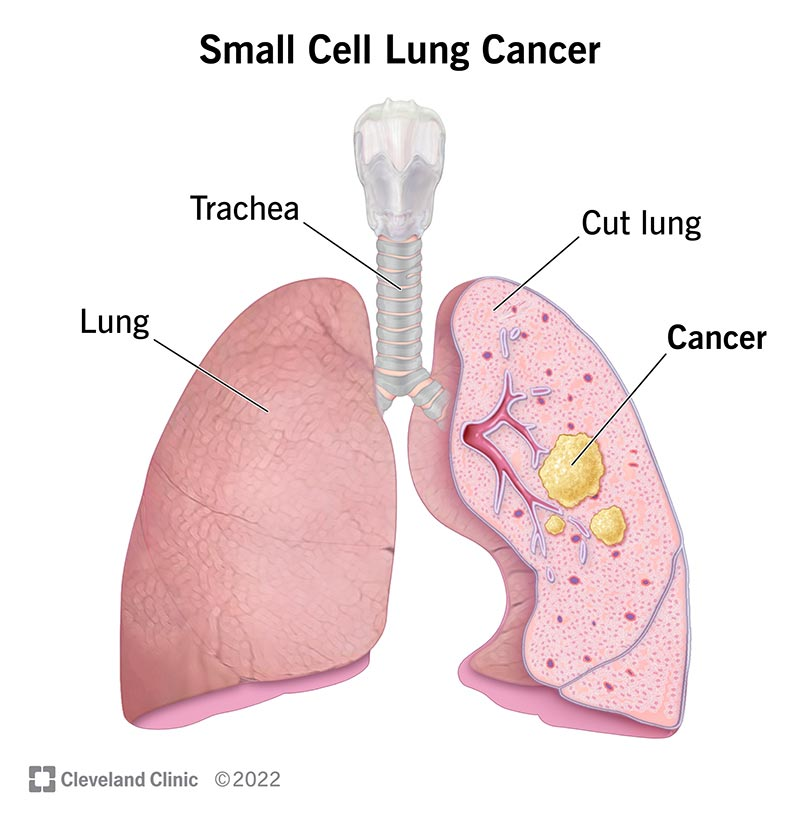
- Non-small cell lung cancer: The most common type of lung cancer, which grows and spreads more slowly. Common types include adenocarcinoma and squamous cell carcinoma.
- Small cell lung cancer: A less common type of lung cancer that grows more quickly and is more likely to spread to other parts of the body. Specific types of SCLC include small cell carcinoma (also called oat cell carcinoma) and combined small cell carcinoma.
- Other types of cancer in the lung: Other types of cancer can start in or around your lungs, including lymphomas (cancer in your lymph nodes), sarcomas (cancer in your bones or soft tissue) and pleural mesothelioma (cancer in the lining of your lungs). These are treated differently and usually aren’t referred to as lung cancer
Understanding stages of Lung Cancer:
Lung cancer is categorised into stages to describe the severity of the disease.
-
Stage I:
 Cancer is small, localised within the lung not spread to nearby lymph nodes and not invade nearby structures.
Cancer is small, localised within the lung not spread to nearby lymph nodes and not invade nearby structures. -
Stage II:
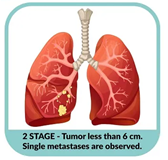 Cancer is larger, spread to nearby lymph nodes or tissues, and may involve the chest wall or diaphragm.
Cancer is larger, spread to nearby lymph nodes or tissues, and may involve the chest wall or diaphragm. -
Stage III:
 The cancer spreads to more distant lymph nodes and possibly nearby organs or tissues.
The cancer spreads to more distant lymph nodes and possibly nearby organs or tissues. -
Stage IV:
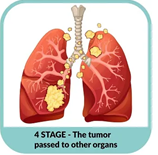 Cancer metastases to distant parts of the body such as the liver, bones, or brain. It is the most advanced stage.
Cancer metastases to distant parts of the body such as the liver, bones, or brain. It is the most advanced stage.
The treatment protocols will depend on the severity and extent of the spread.
Reasons for getting the Lung Cancer:
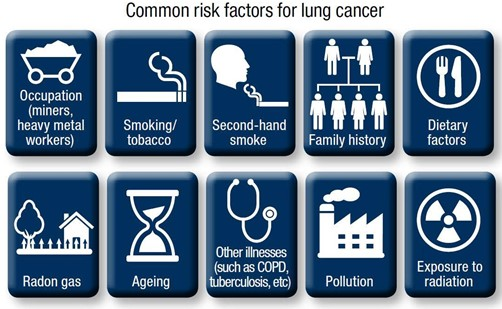
Symptoms of Lung Cancer:
Lung cancer symptoms are common issues and confused with other ailments. Lung cancer may not present distinct symptoms until advanced stages. Common symptoms not to ignore are:
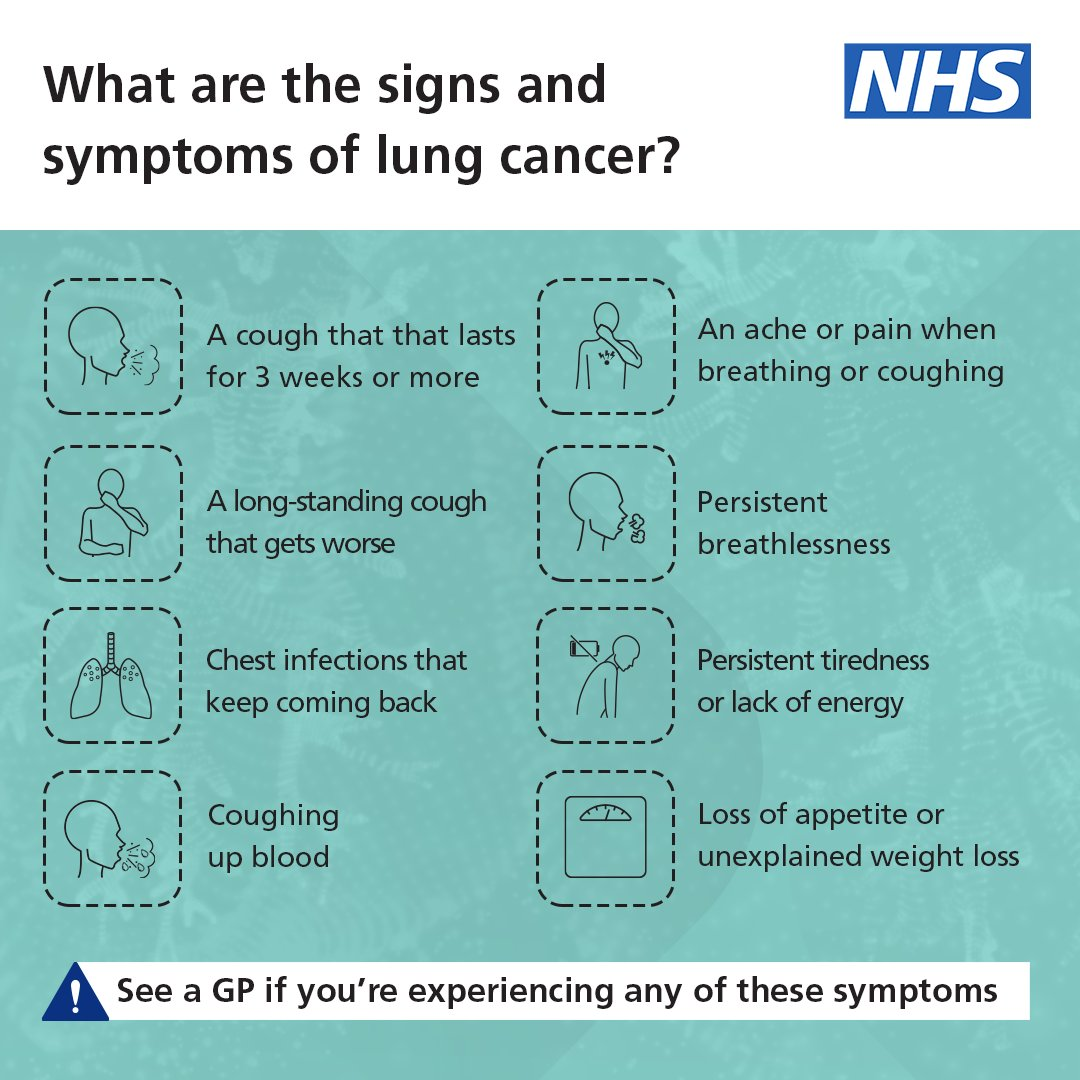
Complications of Lung Cancer:
Lung cancer can lead to various complications that may arise from the cancer itself, its treatment, or a combination of both. Common complications include:
- Spread to other organs quickly if it is not contained
- Tumours or fluid accumulation in the lungs
- Increased chance of developing infections such as pneumonia and bronchitis
- Bleeding in the airways
- The risk of blood clots such as deep vein thrombosis (DVT), is higher
- If cancer spreads to the spine, it can cause pain and weakness
- Tumours affecting the oesophagus can make swallowing difficult
- Tumours pressing on nerves may cause chest pain
Diagnosing Lung Cancer:
Diagnosing lung cancer involves a combination of methods to confirm the presence and stage of the disease:
- The doctor reviews symptoms, and medical history, and conducts a physical examination to identify signs of lung cancer.
- Blood tests assess overall health and check for cancer markers.
- Imaging tests such as chest X-rays, CT scans, and PET scans are used to detect abnormalities in the lungs and surrounding tissues.
- Sputum cytology involves examining mucus (sputum) from the lungs under a microscope to identify cancerous cells.
- Biopsy techniques such as needle biopsy, bronchoscopy, or surgical biopsy, are used to obtain tissue samples for analysis.
- Molecular testing analyses cancer cells for genetic mutations or other changes to guide targeted therapy options.
Treatment of Lung Cancer:
Treatment plans are tailored based on the cancer's type, stage, location, and the patient's overall health to eliminate cancer, control its growth, and manage symptoms. Treatment options include:
- Surgery to remove tumors or affected parts of the lung
- Radiation therapy uses high-energy rays to kill or damage cancer cells
- Chemotherapy uses drugs to kill or inhibit the growth of cancer cells
- Targeted therapy employs drugs that target specific molecules involved in cancer growth and spread
- Immunotherapy boosts the body's immune system to recognize and attack cancer cells more effectively
- Palliative care to enhance the quality of life by focusing on pain management, providing nutritional support, and offering breathing techniques and exercise training
Treatment side effects may include nausea, vomiting, fatigue, pain, hair loss, and a higher risk of infection.
Prevention:
To prevent lung cancer the most effective strategies include:
- Stop smoking: Cigarette smoking is responsible for approximately 90% of lung cancer cases. Quitting significantly reduces risk.
- Avoid secondhand smoke: Exposure increases lung cancer risk for non-smokers.
- Test for Radon: Radon is a naturally occurring radioactive gas that is produced from the ground. Ensure proper ventilation, particularly in basements; testing and mitigation can lower exposure.
- Maintain a healthy lifestyle: Regular exercise and a balanced diet rich in fruits and vegetables may help reduce risk.
- Low-dose CT scans: Recommended annually for high-risk individuals (e.g., heavy smokers aged 55-80) for early detection of lung cancer before symptoms appear.
- Tracers for detection: Current research is exploring various biomarkers and imaging techniques, including PET scans, to enhance early detection of lung cancer, but specific tracers are still under investigation.
 Back
Back